A while back I bought a Lulzbot Taz 6 3D printer with the goal of creating and selling a boat-specific product online. I’m still working on that design, but in the meantime, I’ve been able to print a number of useful items for the boat, and some random trinkets just for fun. I see a lot of other uses for the printer in both home and sailboat, and can’t wait to see what other people produce with their design brains as well.
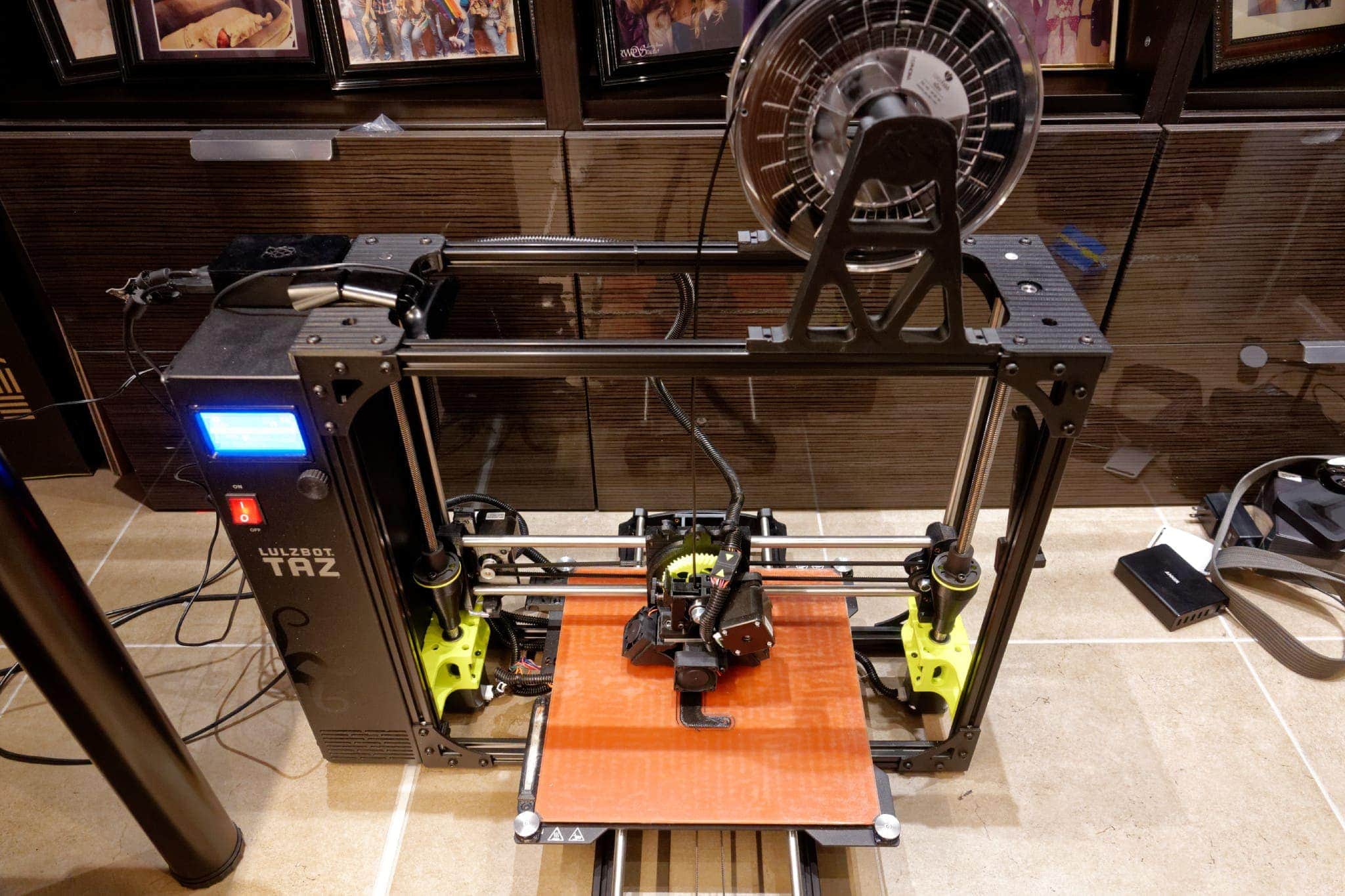
Taz 6 3d printer
3D printing is nothing new to boats, but I think the potential for people to create new products and ideas is just beginning. So far, I’ve printed tons of keychains, small animals, names, symbols and other rather useless things. It’s very mesmerizing to watch, and recently I installed a bed-mounted camera that allows for slightly better views of the actual print happening.
The potential for doing much more comes into play every day that I think of things while working on projects. For instance, I recently moved my MikroTik WiFi router and couldn’t find the right spacer for the mount, and ended up printing a quick one when I got home. Not having to go to a store, and having a custom made part instead of hacking something from West Marine into the mix is a new level of freedom and quality.
I’ve printed various types of plastic (ABS, nGen, HIPS) as well as copper & wood. I have not yet printed rubber or gaskets because my printers head doesn’t support it, but that could be very useful on a wet boat.
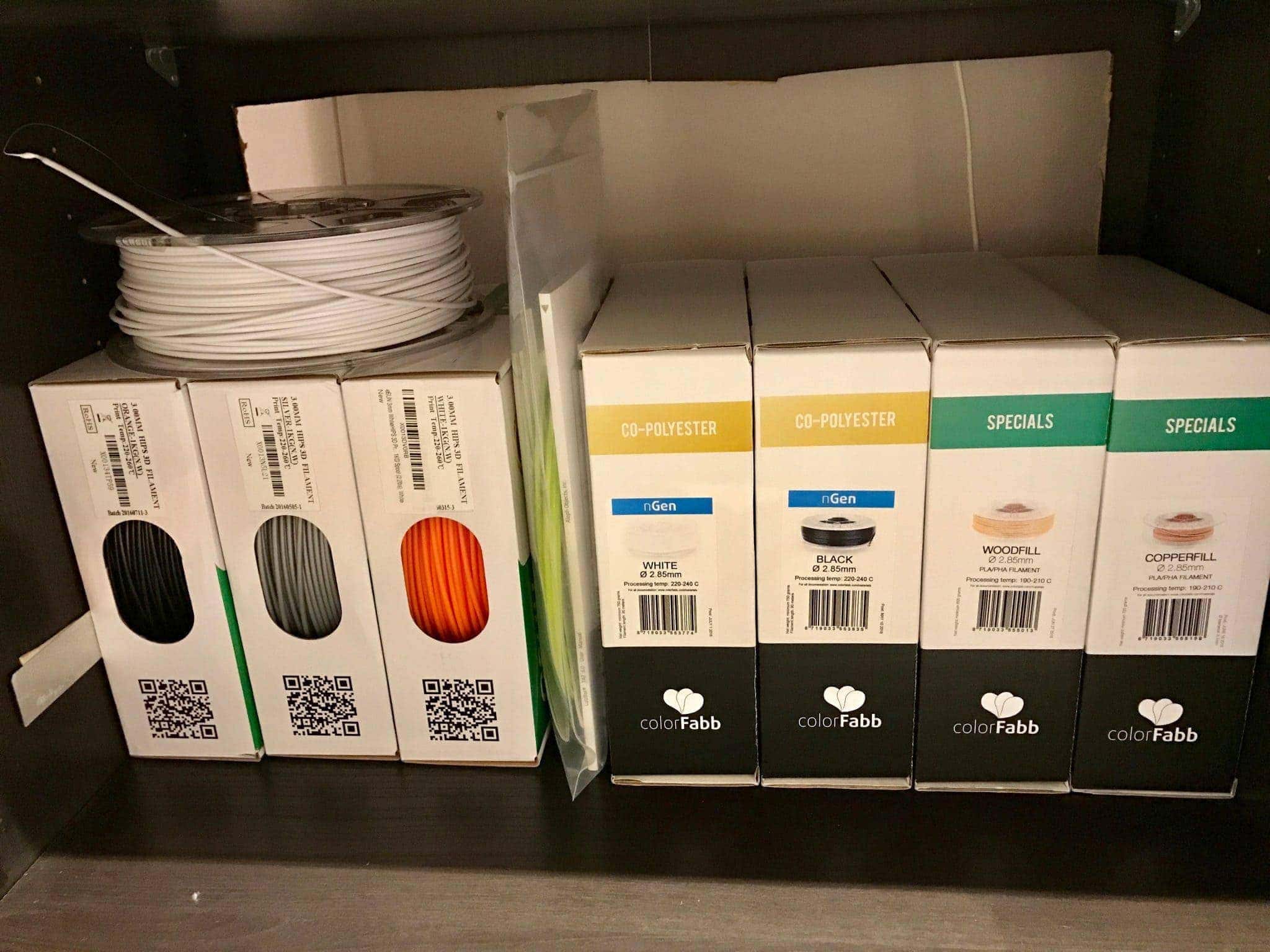
Currently, nGen by colorFabb is my favorite material to print with for general use. It is not as fragile as HIPS, and does not have the terrible fumes of ABS, yet is surprisingly similar. It’s a co-polyester filament that is super shiny and very tough. It seems to be easy to print with, doesn’t require crazy things to get started, isn’t killing me with fumes, and is flexible but resilient in all of the applications I’ve used so far.
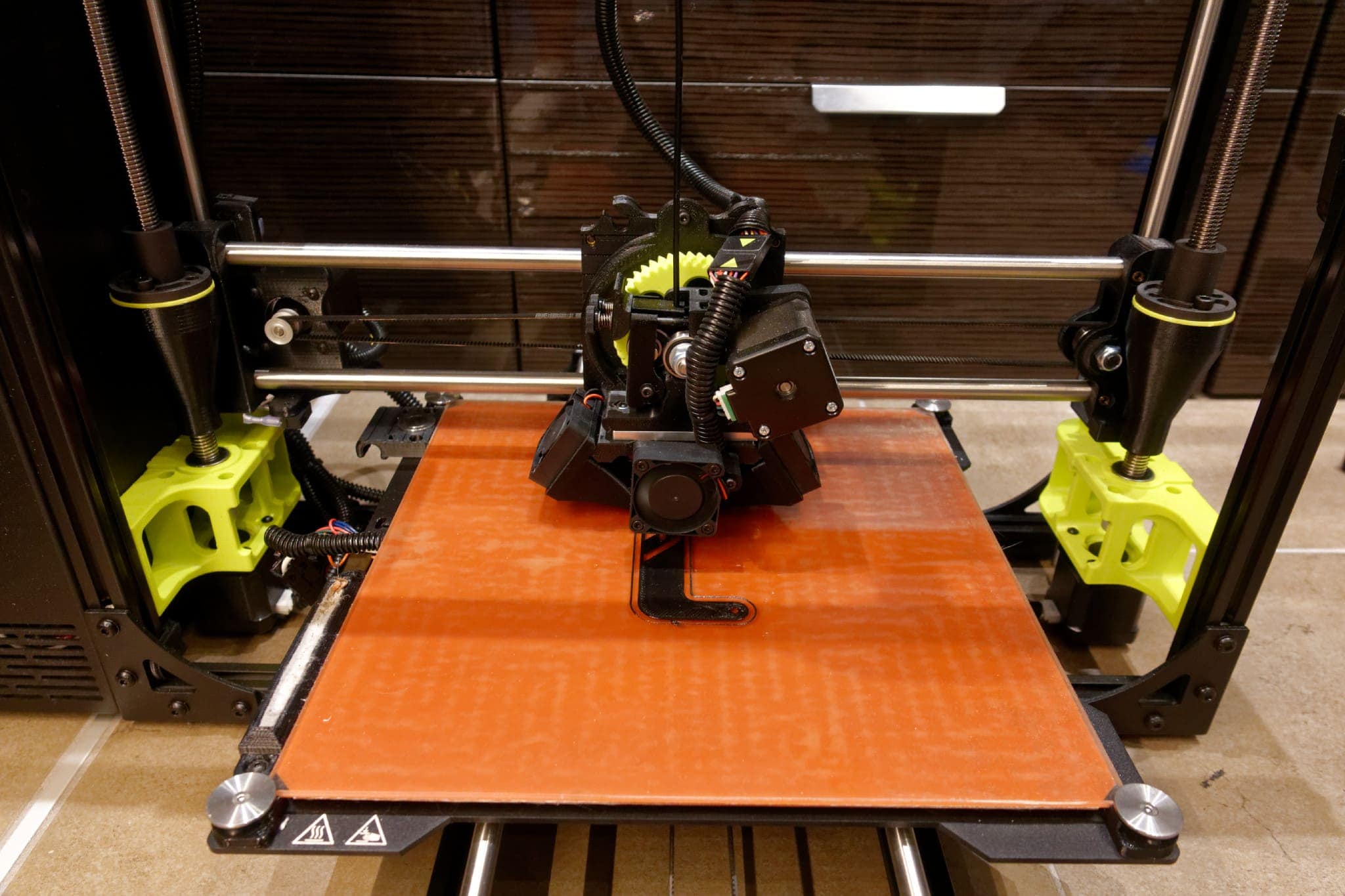
Close up of printer bed
My brain still can’t fathom printing in wood or copper, and the resulting things I’ve created in that medium so far have been a napkin holder and more keychains. I’m sure there’s a more practical application, but I haven’t found it yet.

My primary way of finding things to print is Thingiverse. Not only are there tons of things to print, like a Bat Signal for your iPhone, or an Ethernet cable manager, but you can load many of them in the Customizer and change all sorts of properties before printing. It’s quite a wonderful set of tools, and there are even more sites out there with even more things to print. Some even charge for their models, and they are pretty amazingly designed.
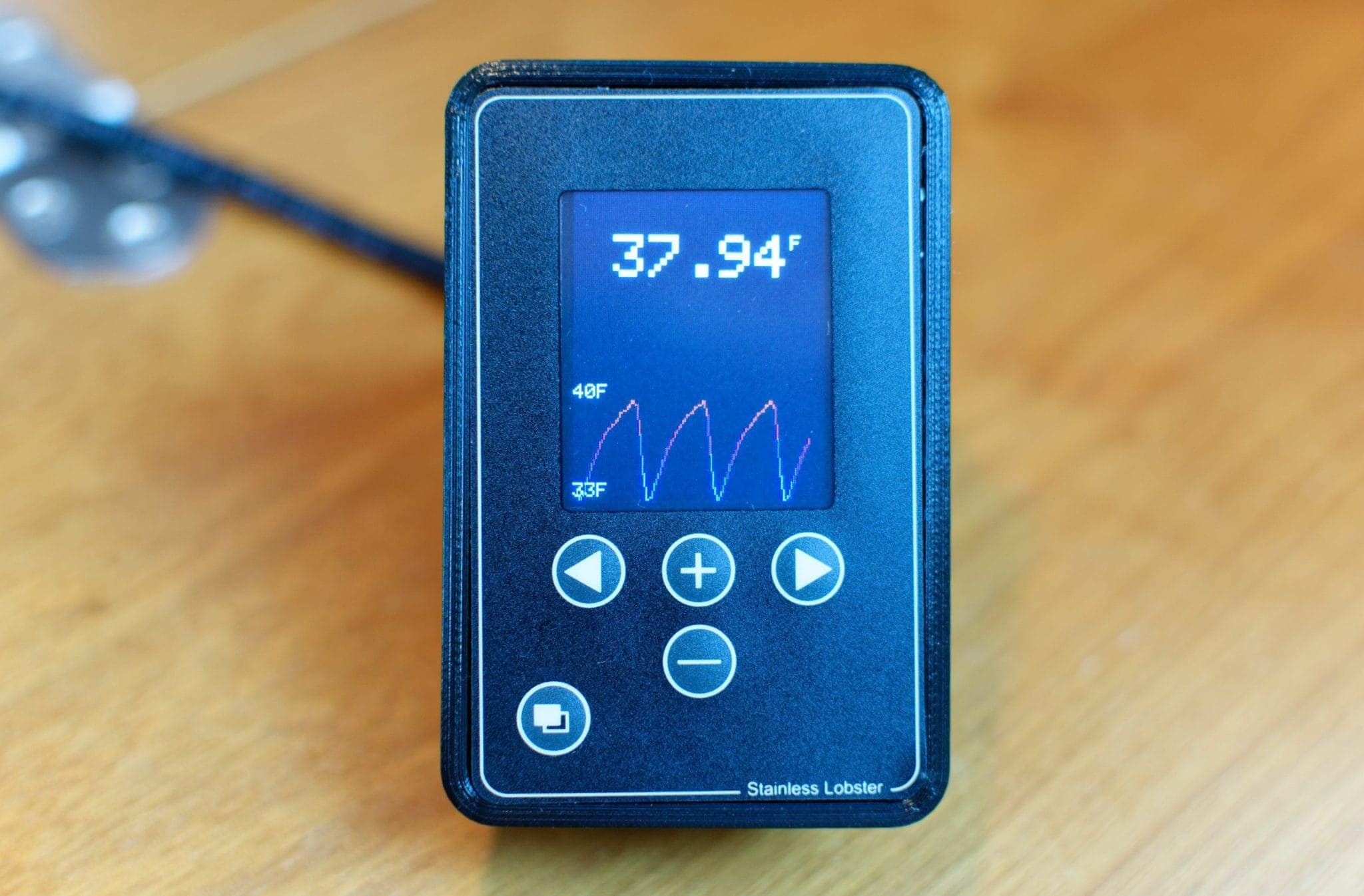
Stainless Lobster Fridge Optimizer – a 3D printed product
There are already 3d printed products in the marine market, like the Stainless Lobster Fridge Optimizer I’ve written about before. I have some really cool ideas that I alluded to earlier in this post, and can’t wait to prototype and print. It gives the average consumer a way to create a product with a very low barrier to entry.
There’s a great article on Practical Boat Owner about printing boat parts and the selection process for printer and filament. It’s a couple of years old, and technology has been moving fast, so there are a lot of other options out there, but it is still good reference.
I chose the LulzBot Taz 6 after a lot of research and 6 months of thinking about the purchase. Thanks as well to Steve Roberts @ microship.com for his thoughts around LulzBot and letting me play with his LulzBot Mini aboard his floating substrate Datawake several times throughout the process. LulzBot impressed me with their support, being made in the US, and most of all, being Open Source. These devices aren’t cheap, and knowing that I’m not locked into a particular companies roadmap, or stuck with a printer that isn’t getting updates or enhancements is a comfort.
On top of that, the Taz 6 is an amazing printer, with tons of top-of-the line specs at an affordable price. The two key ones for me are the size of the bed (11 inches square) and the auto leveling bed itself. This last one is something that other printers require you to calibrate constantly, sometimes every print job, and can be very frustrating and time consuming.
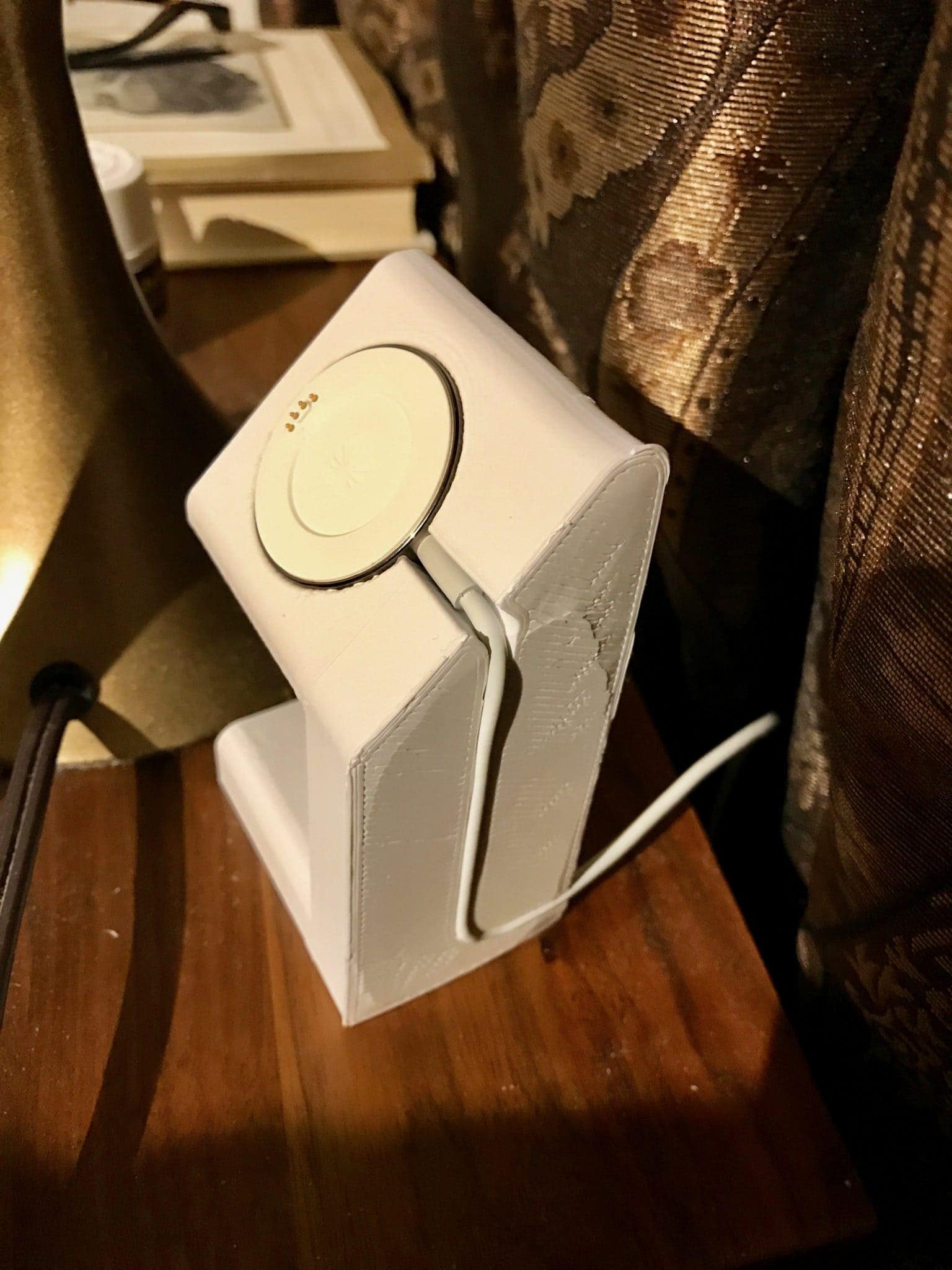
HIPS printed watch stand for smart watch
Case in point on the bed leveling and quality of LulzBot – in the 2+ months I’ve had the printer, I’ve only had one failed print, and it was made with HIPS which is notoriously brittle. Everything else I’ve made has been usable in some way, albeit some less than others. I have had some less-than-level prints due to heat and curing, especially with HIPS. Above you can see a watch stand I printed for Josh that, while functional, does not look terribly great because the print warped up from the hot bed.
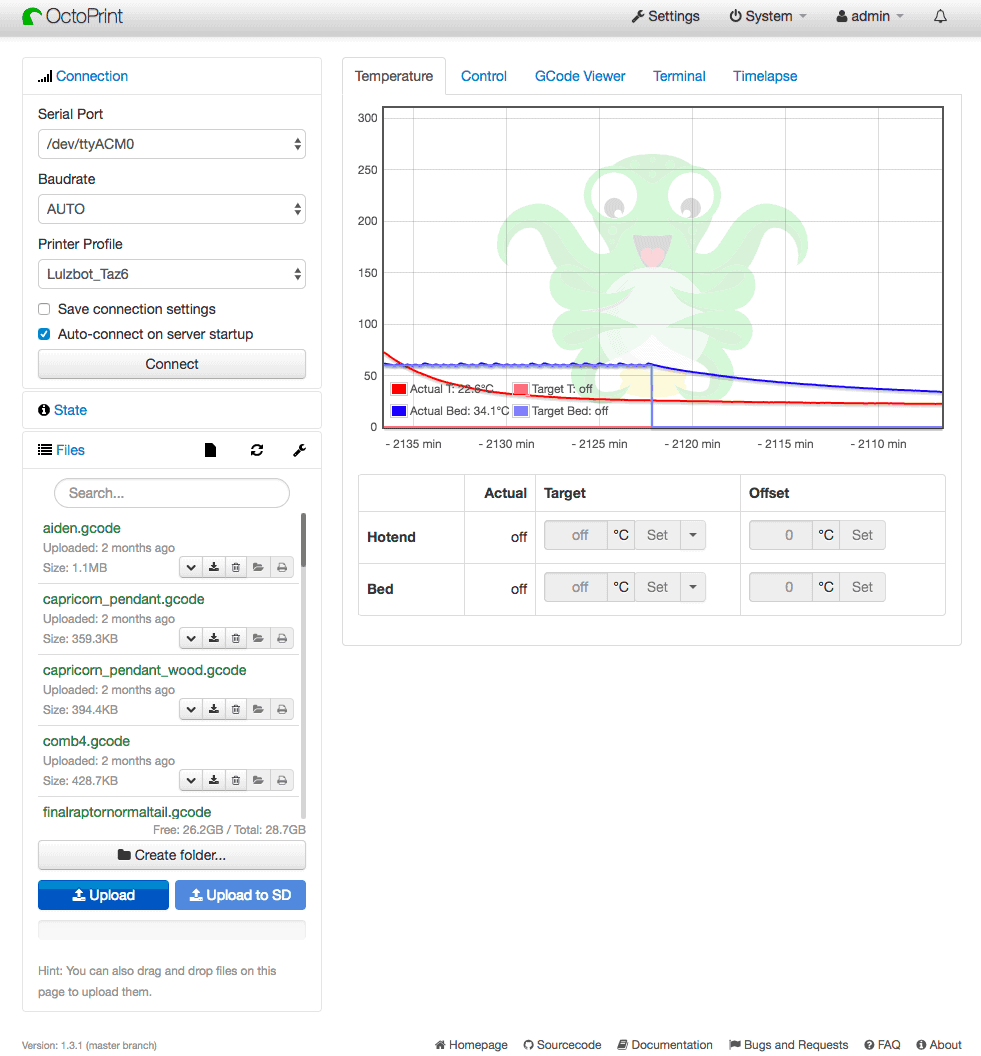
The other piece that has made printing with the Taz very easy is OctoPrint, specifically their OctoPi derivative that runs on a Raspberry Pi. I have a dedicated Pi that runs the software and has made using the printer super easy. No need to have Cura, the software that comes with the printer, running on my Mac and connected all the time – I can submit print jobs to the OctoPi and have it manage and run it for me. It also produced the nice timelapse video above, and allows for a ton of other management of the printer itself when changing filaments – all accessible via a secure web interface.
The next step for me is learning the design software world. There are two main front-runners that have been recommended: Blender and Autodesk Fusion 360. So far I have not had the opportunity to do much with them, although Blender looks slightly better and more along the lines of what I want to do.
The practicality for using a 3d printer for rail mounts, shims, and organizers on the boat is great, but what I’m really interested in are more specialized products specific to my boat model, year, and customizations. I hope to see more from boaters out there who can afford to purchase one, and have the design time to start creating cool things. That’s what I intend on working on this year!

